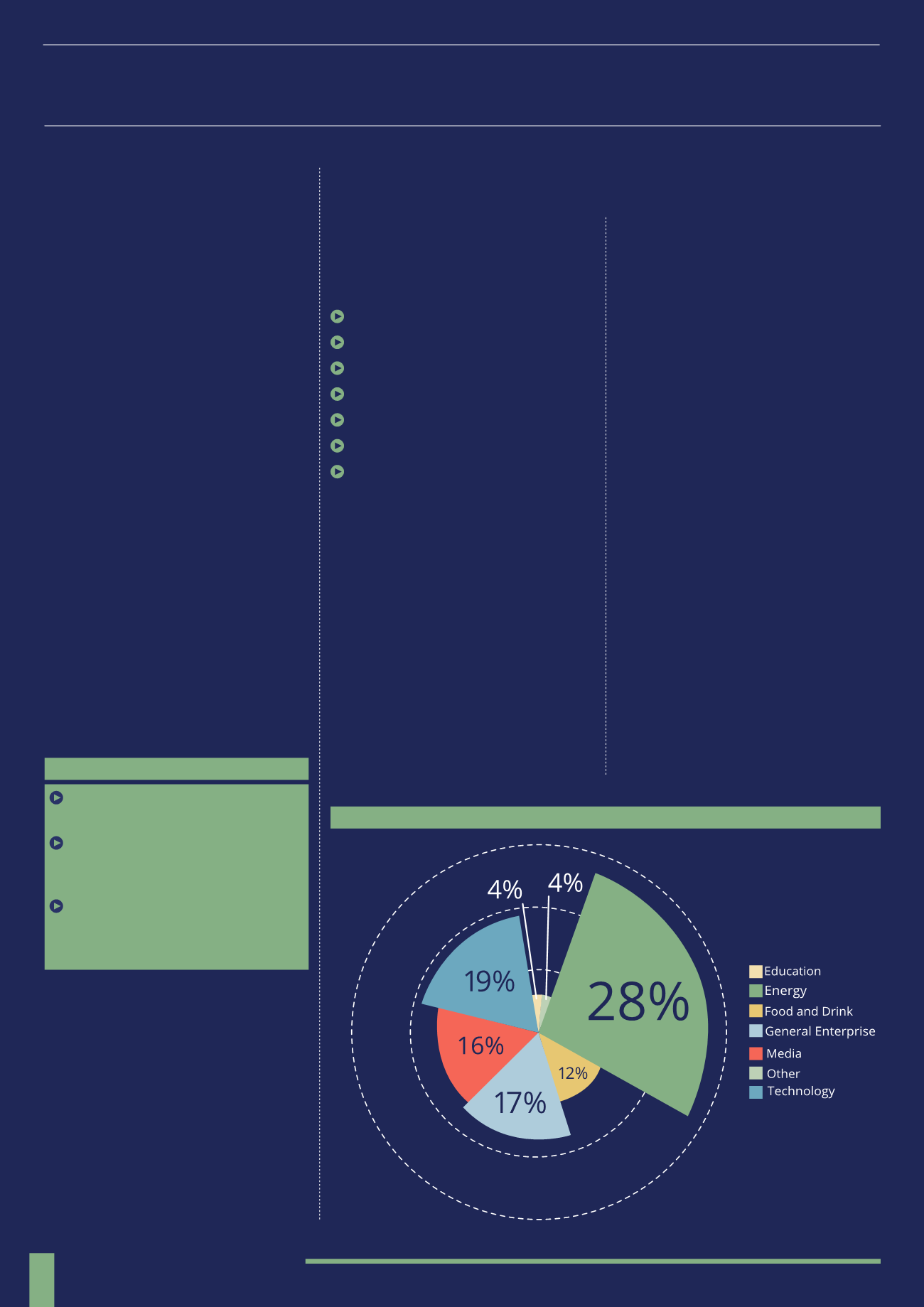
54
THIRD PARTY REVIEWS
Investments often go through a third
party review from either Allenbridge
Tax Shelter Report or Tax Efficient
Review. These companies review both
single companies and funds and aim to
provide impartial opinions on a number
of aspects of the investment such as the
track record of the manager, the focus
and sector of the investment and the key
principles behind the offering. These two
reports are often used in the marketing
of the product as they provide impartial
opinions for investors and advisers to
use as part of their own due diligence and
investment decision making process.
As reviews are only made available to
paying subscribers it is not possible to
accurately ascertain which investment
offers have or haven’t been reviewed: based
on our desk research we estimate that 62%
of investments (across both single company
and funds/portfolios) have been reviewed
by either Allenbridge Tax Shelter Report
or Tax Efficient Review, with 6% reviewed
by both companies. If these estimates are
correct it would suggest the remaining
32% have not been reviewed by either
company. Going through this review process
does not incur a cost for the provider.
The benefits include increased exposure,
marketing and enhanced credibility.
There are seven principal industry sectors
within the EIS market which can be
broken down into a number of specific
sub-sectors. This analysis looks at the
sector level only. The sectors are:
Energy
Technology
General Enterprise
Food and Drink
Media
Education
Other
At present the largest sector is Energy,
which accounts for 28% of the market.
Investments available within the Energy
sector include traditional energy projects,
but the bulk of investments are in
renewable energy projects such as wind
turbines and solar power installations.
These projects have their revenue streams
underpinned by government subsidies
such as Feed-in Tariffs (FiTs) and Renewable
Obligation Certificates (ROCs), which
guarantee a minimum price for the energy
produced over a fixed period of time.
The subsidies remove some of the
uncertainty from the undertaking, and
as the installation, maintenance and
performance of renewable energy kit is
now well understood and very robust,
these investments are very attractive.
The treasury has recognised this and
has gradually been lowering FIT levels
resulting in them now being excluded
from inclusion in EIS (with the exception
of hydro and biomass installations).
Technology is the next largest sector
accounting for 19% of the market, followed
closely by General Enterprise with 17%
and Media with 16%. These sectors are all
relatively well established in the market
and include a mix of single company and
managed funds. General Enterprise is a bit
of a catch-all, but it is no surprise to see
Technology and Media capturing so much
of the EIS investment market, as they are
both sectors that experience a high degree
of change and engender themselves to
adventurous, smaller start-up companies
of the sort that qualify for EIS status.
Smaller niche investment sectors including
Construction, Transport and Sport have
been grouped together under Other due
to the very small number of investments in
this space. Education is another very small
sector, which together with Other accounts
for less than 10% of the overall market.
“EIS funds allow an investor into a deal-flow that is not generally seen by Angel investors”
Alastair Kilgour, Parkwalk Advisors
28%
OPPORTUNITIES BY SECTOR
KEY POINTS
16% of the EIS investments on our
investment register are currently open
EIS providers prefer unapproved funds
to provide more flexibility to managers
and investors
Fund/portfolio investments tend to
have higher minimum investments than
single company investments, averaging
around £16,000
SECTOR ANALYSIS
(1998-2014)
20%
30%


